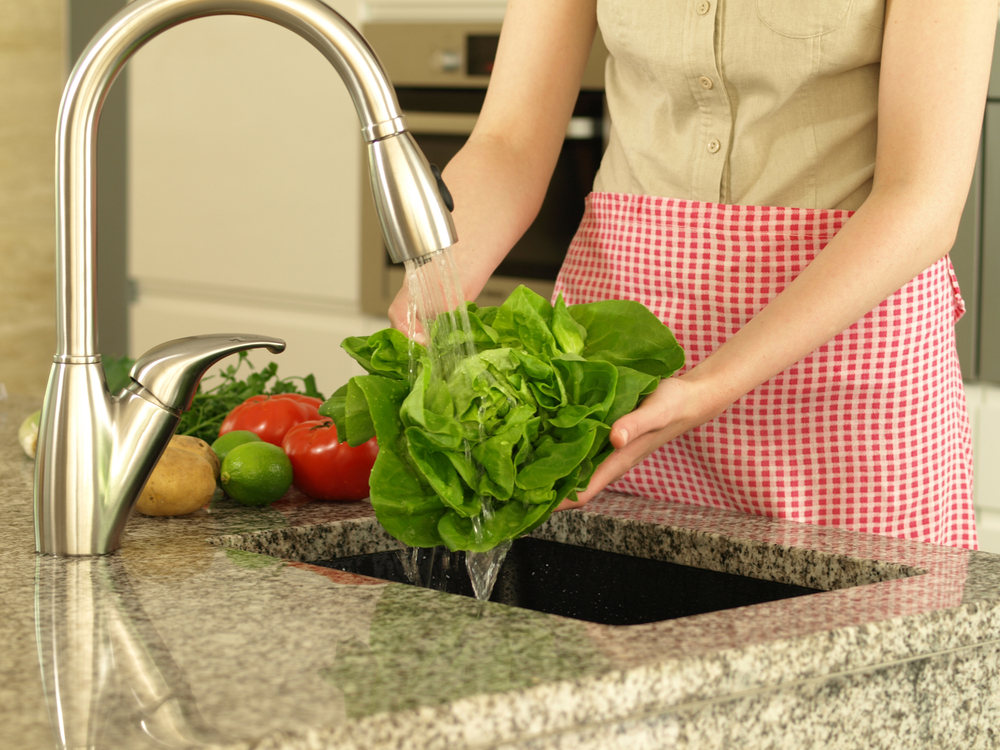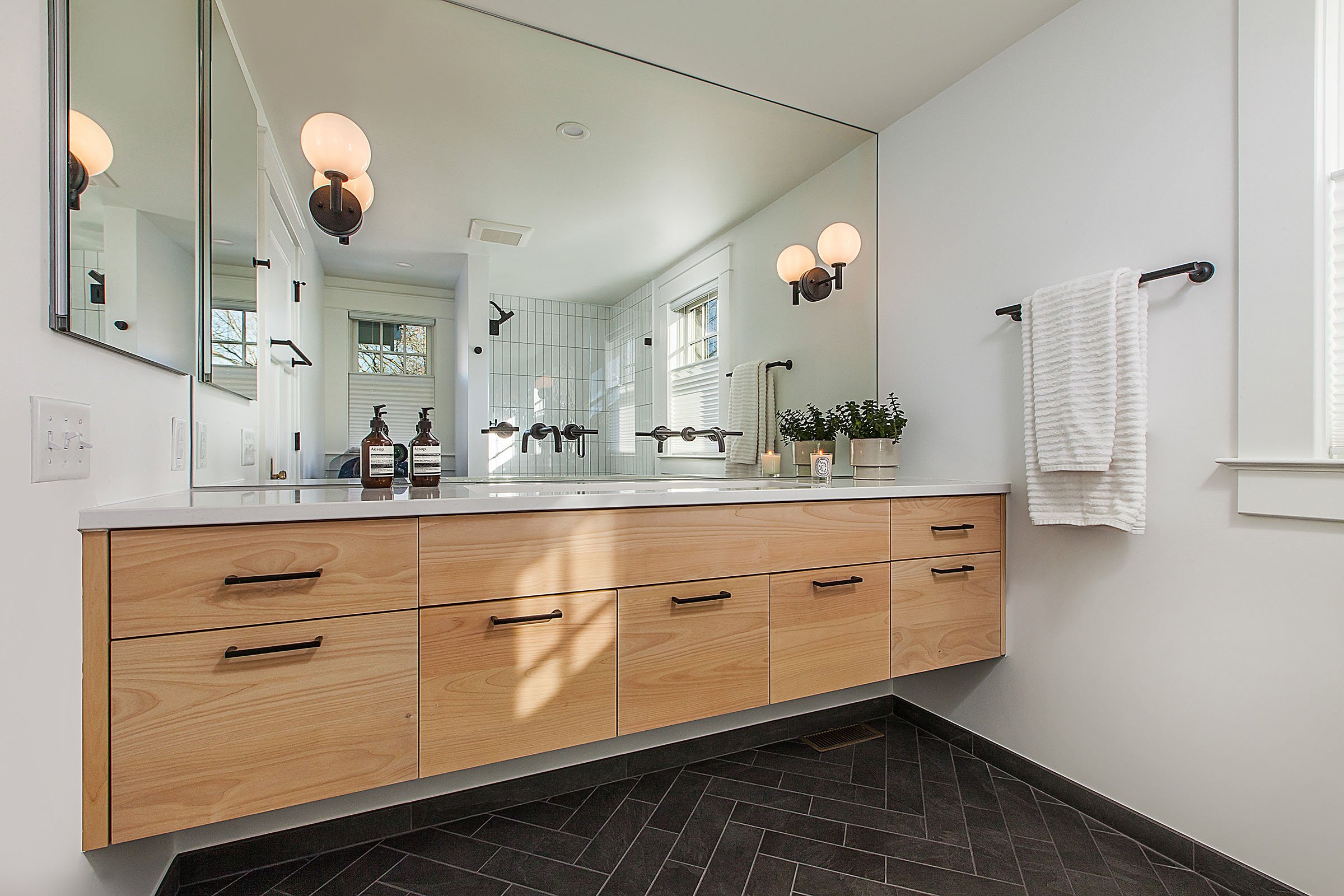1 min read
Riding the Renovation Rollercoaster: The Emotions Behind a Remodel
Every home remodeling journey comes with its own set of emotions, and no project is without its ups and downs. After remodeling homes in the greater...

Today, approximately 94% of the US population is served by a public drinking water system. In 1974, the EPA enacted the Safe Drinking Water Act (SDWA) to protect public health and regulate the public drinking water systems. Under the SDWA, over 90 contaminants are regulated and water testing and treatment methods are specified.
In Michigan, the Michigan Department of Environment, Great Lakes and Energy (EGLE) administers and enforces the requirements of the SDWA through the Michigan Safe Drinking Water Act.
By law, each community water system must annually deliver to its customers a Consumers Confidence Report on the quality and compliance of the public drinking water in that community. For instance, the City of Ann Arbor’s 2020 Water Quality report can be found in here.
Fortunately, the US enjoys public drinking water systems that, while not perfect, are among the top ten in the world. However, that doesn't mean we should rest easy. Our aging infrastructure can make water vulnerable to contamination, and many systems are at risk for the types of problems like we have seen in places like Flint and Benton Harbor, Michigan.
Our water systems, while having excellent filtration, cannot filter everything out, and most municipal systems also add other things in - like chlorine. There are obvious pollutants like the dioxan plume in Ann Arbor and PFA's, and not-so-obvious ones like pharmaceutical contaminants that are a result of both flushing drugs down the toilet, and human and animal excretion.
While many contaminants have levels that are considered “safe for ingestion,” the fact of the matter is that no one knows how this cocktail of chemicals can interact with each other, and in each of our individual bodies. Worse yet, when we shower, these chemicals can become airborne in the steamy vapor at relatively higher concentrations and in a manner that is more ingestible into your body — your lungs.
If you are on a public water system, while you may still want to test periodically, the annual Consumer Confidence Report published by your local public water administrator can provide you information on the quality of your drinking water.
Federal laws do not regulate private wells but state programs for private wells exist to ensure (to the best of the government’s ability) that this drinking water is safe. Information on private wells can be found in this link.
In nearly all states, oversight of private wells have been delegated to the local community health departments. Local regulations often cover permitting, construction and installation of private wells, and may require specific disclosure and inspection requirements similar to a lead paint inspection when a property changes hands. However, testing and ensuring the quality of the private well water is left to the homeowner.
Concerns with the safety of groundwater can arise from naturally occurring elements such as fluoride, arsenic and certain radionuclides, and the presence of microorganisms (parasites, bacteria and viruses) found in nature and animal wastes.
Human activities such as manufacturing and agricultural operations, septic fields and landfills, all release contaminants - metals, organic chemicals, nitrates — that can leach into the ground to reach the aquifer, creating significant health risks. Those environmental contamination hotspots that make people sick are many times caused by the ground water used in homes and buildings.
If you’re on a private well, the Centers for Disease Control recommends annual testing for at least total coliform bacteria, nitrates, total dissolved solids, and pH levels.
In addition to concerns over the source of your water (public vs. private), you need to be mindful of the pipes that deliver the water into and throughout your home. You can’t do anything about the municipal pipes used by your public water supply, but you can do something about the pipes and water supply within your home.
If your home was built pre-1970, and the plumbing has not been upgraded, it is likely that you have galvanized steel pipes (i.e., steel pipes coated in zinc to prevent corrosion). Or perhaps the copper pipes in your home used lead-based solder to connect them. If either of these pipes have the right water conditions, they can begin to corrode, releasing lead and cadmium into the drinking water which then become significant health risks, especially for young children.
Lead is by far the most common and insidious of risks for municipal drinking water. Unless you can afford very expensive piping throughout your home, there is no silver bullet of absolute purity here. But most types of modern piping are vastly better than the type of legacy plumbing that can be found in older homes.
Copper piping is generally considered safe if the solder does not contain lead. Modern solders are made with a tin-antimony or tin-silver alloy. While not perfect, they are much, much safer than lead-based solder, assuming the water coming into the home is of good quality. It is a best practice to make sure your drinking water is not acidic, which can leach out metals over time. Most municipal systems add a fair amount of calcium carbonate to their water to keep the water slightly alkaline, but you can have that tested.
PEX piping can also be a good choice for drinking water. PEX also saves a good bit of water due to the physics of how pipes work, so it can be a good choice for your wallet and the environment. Less water use equals less energy use.
PEX can contain trace quantities of Ethyl Tert-Butyl Ether (ETBE), especially in chlorinated water. While this compound at high concentrations has been shown to be neurotoxic, it is very dilute in PEX pipes. Typically this goes away as the pipes are flushed repeatedly, but even extremely minute quantities of plasticizing compounds can impart an “off” taste to the water. It's good to know that the EU and the State of California, both of whom have high public safety standards, have stated that PEX is safe for drinking water.
Most people who are on wells are familiar with water treatment systems to soften the water, remove iron, possible arsenic, and other items. It is important to test your water annually if you’re on a well to ensure good quality and safe drinking water. For municipal systems, there is generally (but not always) reliable information on the water quality.
Even with municipal water supplies, many homeowners (like yours truly) will opt to install a water purification system. These systems remove sediments, biological contaminants like viruses and bacteria, heavy metals and organic chemicals
There are mainly two types of water purification systems that are in regular use in homes, Reverse Osmosis systems and filtration system. They are generally used in different ways and have different modes by which they work.
RO systems use a technology that forces water through a membrane, leaving everything that is in the water behind. This results in very pure water, but RO is also somewhat energy intensive and wastes as much as 4 gallons of water for every gallon that is purified.
While RO-purified water is very clean, many people report that it tastes “flat” or “flavorless”, mainly due to the lack of minerals in the water. Minerals can be healthful too, so it is a consideration.
RO systems are generally “point of use,” meaning they have a special spigot — generally in a kitchen area for use for drinking or cooking. There are whole-house RO systems, but they are very expensive, they use a lot of energy and water, and they can take up the better part of a garage.
Whole house filtration systems are a more common way to treat the water supply coming into a home. These can range in price depending upon the capabilities of they system, but in general - these are a less expensive way to treat your water supply. A filtration system relies on cartridges that are replaced annually and filter the water rather than moving it across a membrane.
There is a lot of chemistry that goes into the filters and there are a lot of different filters as well. Generally, these are based on what is found in the water, or what the municipal water system adds to the water. Filtration systems generally can remove chlorine, lead and some organic compounds, as well as filtering out sediment and biological contaminants. There is no water wasted in the process either.
Filters leave the good minerals in the water (which is a benefit), but they cannot filter out 100% of the bad stuff. When it comes to organic compounds, a good bit of it can be removed, but not everything.
Block carbon filters and certain pleated carbon filters will be better at removing organics and other impurities than loose media filters. Most municipal water has very minute quantities of harmful organic compounds however, so these types of carbon filters, which can be expensive, are not always necessary for most people.
Remember there isn’t one system or filter that does it all - removing all impurities while leaving the good minerals in the water, but depending upon the condition of your home's water and your personal preferences, you can find a balance that will work for you and your family.
Municipal water quality in the United States is generally pretty high. There are some notable exceptions, but for the most part you can be confident that what comes out of your tap is safe. For private wells it is important to do regular testing. For both types of supply systems — adding a water purification system can ensure that the water you are drinking or bathing with is the best it can be for you and your family.
If you are thinking of building new or doing a major renovation at your home, it's the perfect time to update your water system. Give us a call at 734-332-1500 or fill out our contact form. We'd love to start the conversation.

1 min read
Every home remodeling journey comes with its own set of emotions, and no project is without its ups and downs. After remodeling homes in the greater...

Transforming your home is not just about aesthetics; it's about finding solutions that fit your budget and lifestyle. When upgrading your kitchen or...

We’re thrilled to be featured in The Scout’s Guide’s latest piece, “How to Upgrade Your Basement, According to the Experts.” We invite you to check...